In a previous post I spoke about the WMS G+ Deluxe progressives, and how they increment based on wins. That can make it a bit more difficult to know what your expected value on a play will be and how much you’ll need to invest.
The same can’t be said for Ainsworth’s progressives, which are designed with a Must Hit By model that is based on coin-in.
Michael “Wizard of Odds” Shackleford took a look at the games a few years ago, and shared some data based on his experiences with a series of games. The precise nature of those calculations may be helpful for those who are trying to get past the math and to whether you should look at a machine or not.
An EV Formula for Bet-Based Must Hit By Machines
These may still be accurate for some games, but six years has passed since that article, and there’s always the chance not every game is identical. As such, a more generic format might be advisable. The basic idea was calculated on a more generic level by this post on Advantage Slots.
Here’s the data points:
- You can calculate how quickly the meter moves based on your bets.
- Based on how much it costs to increment it a penny, you can easily calculate the maximum amount of wagers you must make to reach the absolute top of the “Must Hit By” range, since the game lists the top number.
- You also know you’ll win money along the way, so you can calculate a rough estimate. In another recent post, I use 85% as that’s the low-end average on penny slots. Advantage Slots opts for the same number for their calculation.
- You also know that the progressive will hit anywhere between now and the top. So you can use the midpoint of those two numbers as the expected value of that jackpot. Or, you can use the worst case scenario – that it hits at the highest point, to be more conservative.
Based on those data inputs, you can determine whether a game has an expected value that’s positive or negative.
Hypothetical Examples
To show the math in action, let’s use the following scenario:
- The progressive Must Hit By $500. It currently sits at $470, which seems high on the surface. Therefore the midpoint is $485, the expected value of the progressive as it stands now.
- The progressive increments one cent for every $2.50. That means $250 for every dollar.
- Now, that’s coin-in, not actual loss. You would normally expect to make 85% of that back, on average. Part of the machine’s overall payback includes the progressive, so you’ll want to reduce the payback for the base game. Most progressives are 2-4% of a machine’s overall payback, so let’s go with 3% as the average, and reduce the base game payout to 82%.
- Add the expected amount of the jackpot to the 82% expected win to determine how much you should get out of the machine. You can then compare the coin-in and out to see where that puts you.
The midpoint case:
- $250 in coin-in per dollar, and $15 to the midpoint, would be $3,750.
- If you won the average 82% back on the base game with that coin-in, you’d win $3,075.
- You’d also win $485 for hitting the progressive at the midpoint.
- You would have a total coin-out of $3,560.
- You’d lose, on average, $190 in this scenario.
The worst case:
- $250 in coin-in per dollar, and $30 to the top of the meter, would be $7,500.
- The average 82% back would be worth $6,150.
- You’d also win $500 for hitting the progressive at the top.
- You’d have a total coin-out of $6,650.
- You’d lose, on average, $850 in this scenario.
A full-time Advantage Player would generally avoid this, because the expected value is negative regardless of scenario. A more casual gambler or Advantage Player might take a swing as this and hope for the best, since it’s still an above-average scenario compared to an average penny slot – an almost 90% expected return even in the worst case vs. the 85% we estimated on average, which is still better than the average penny slot’s expected payback. This would of course require patience and commitment to land the progressive, regardless of the base game’s actual performance.
Now, keep in mind those losses are an average – you could hit a bonus and handpay. You could get tons of dead spins. The machines don’t pay back each spin evenly. But that’s also a challenge with Advantage Plays where the advantage isn’t as obvious – there’s still an element of risk to it that could pay off or not. The expected value calculations are designed to minimize bad plays while identifying the better ones.
So, where would this turn to a positive expected value? Let’s start by presuming the meter goes up to $480:
The midpoint case:
- Now it’s a midpoint of $490.
- There’s $10 of meter growth to get to the midpoint, so $250 x $10 = $2,500 of coin-in.
- The expected average payback at 82% would be $2050.
- Add on the $490 for the progressive, and you get $2,540.
- You’d win, on average, $40 in this scenario.
The worst case:
- $250 in coin-in per dollar, and $20 to the top of the meter, would be $5,000.
- The average 82% back would be worth $4,100.
- You’d also win $500 for hitting the progressive at the top.
- You’d have a total coin-out of $4,600.
- You’d lose, on average, $400 in this scenario.
The midpoint scenario is expected to be profitable! But the worst case scenario is not. If you are a more cautious player, you might not be ready to go after this yet, but a risk taker may be willing to try it as it gets into this zone, since the expectation is more than half the time it should be a profitable play.
Ultimately, in this example, the meter would turn positive EV under a worst case scenario a bit shy of $489:
- $250 in coin-in per dollar, and $11 to the top of the meter, would be $2,750.
- The average 82% back would be worth $2,255.
- You’d also win $500 for hitting the progressive at the top.
- You’d have a total coin-out of $2,755.
- You’d win, on average, $5 in this scenario.
Of course this presumes everything goes exactly as expected, which slots are not prone to do, but from here the closer the number gets to the magical $500 must hit by, the better the play becomes.
Why This Even Matters
Now, you don’t know what the actual payback setting of the slot is, or what the base game is supposed to return vs. the progressive. But the purpose of these calculations is just to help you make better decisions if you’re working to pop off a progressive.
With Must Hit Bys, you simply get more knowledge than an open-ended progressive, and can be more selective over the games you play and when.
If you’re a full-time Advantage Player, your time is literally money, and chasing a poor opportunity is never valuable if there’s a much stronger one elsewhere. And chasing -EV scenarios means a higher likelihood of coming out behind where you started, vs. achieving a profit.
For more casual gamblers, examining the progressives just improves your chances and can help you stretch your bankroll longer if you play a machine that is more likely to pay out a progressive.
As far as why I chose to talk about this in relation to Ainsworth, their Must Hit By machines appear to hit completely at random throughout the range of possibilities between the low end and the high end.
[UPDATE 1/21/20:] Some players doubt it’s an even distribution, based on feedback I’ve received. Michael Shackleford uses even distribution in his assumptions, and other players seem comfortable presuming it is. Gambling’s a tough business, with trust in short supply (just like at the Myths vs. Reality bucket on this site of things I’ve come across.) This may weigh which calculation you favor.
On the other hand, AGS’s machines have a reputation for Must Hit By progressives that largely pick values from near the top end of the range, which means you can’t do math that relies on the midpoint of the current progressive number and the top end.
I’ll cover that in a future post, but it’s yet another reason why you need to pay attention to who makes the game, how it works, and ultimately Know Your Slots.
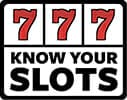

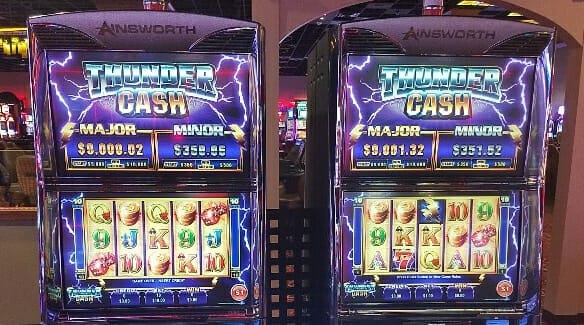

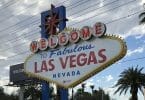
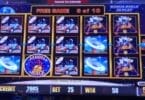
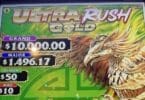
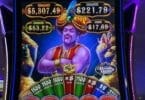
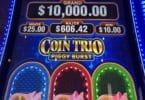
Hello Joshua,
Love the site, but do have to slap your wrist over a math boo-boo. First midpoint case;
$250 in coin-in per dollar, and $15 to the midpoint, would be $3,750. – Correct
If you won the expected 85% back on that coin-in, you’d win $3,187.50. – Correct
You’d also win $485 for hitting the progressive at the midpoint. – Correct
You would have a total coin-out of $3,637.50. – Oops! I believe this s/b 3187.5+485= $3672.5
You’d lose, on average, $112.50 in this scenario. – With the above correction, this becomes -$77.50
Thanks for all you do.
Hi Bret! Thanks for that catch – I indeed did screw that up. I re-ran some numbers awhile ago to correct a separate issue (I make mistakes with the best of them) and didn’t finish it out. I’ve edited it accordingly. Thanks for reading, and for writing in!
How many spins should you expect it to take for your RTP estimate to be about accurate?
It would be pretty lame if you sunk $2,000 placing a handful of large bets that all lost (or won tiny prizes) and then hit a $500 jackpot…
Slots approach their overall RTP over hundreds of thousands or millions of spins – hence EV (expected value) – you can run hot or cold of those numbers in a session, and so it’s not a guaranteed winner unless the meter’s a small number of cents away, but the chances it gets to that point with no one noticing and jumping in to push it over quickly are practically nil.